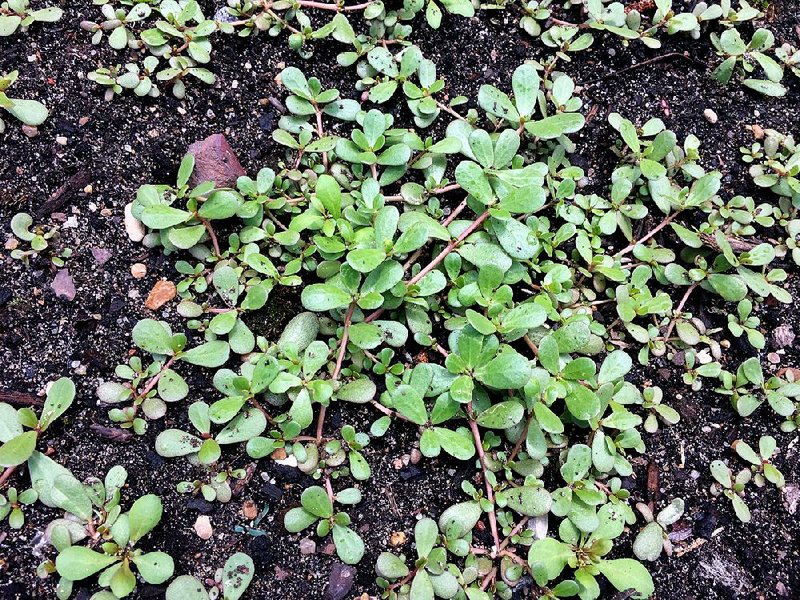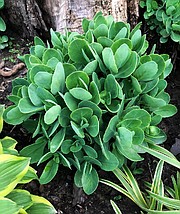Q I am trying to turn my pink hydrangeas blue. I know it all has to do with the pH of the soil. My hydrangea bush is nestled nicely under a cedar tree, has been there about five years and always blooms well -- no exception this year. I bought an organic acidifier specifically formulated for turning hydrangeas blue. The information on the package said it is a slow process, but there was no further information as to what "slow" is. Do you think it is months, years ... I put some of this product on the area twice last year, and I have applied it three times already this year. One bloom appears that it will be blue (although I know it can change) and the rest are most certainly pink. Your thoughts?
A Changing the pH of the soil does take time unless you can work the product into the soil profile where the roots are, which is hard to do around established plants. Aluminum sulfate, garden sulfur or other acidifying fertilizer will help over time. I have several hydrangeas, and the soil is acidic: One has pink, blue and purple blooms -- on the same plant. Why that is, I have no idea. You can also take a soil sample to your county extension office to see what the pH of your soil is so you know what you are working with.
Q What kind of weed is this and how do I get rid of it? It is taking over my vegetable garden. I till every fall and spring.
A The weed in question is purslane. It has fleshy leaves, and the plant radiates outward, hugging the ground. The good news is that it is an annual so it completes its life cycle in one season. The bad news it that it can produce a copious amount of seed, which can persist for years in the garden. It is fairly shallow-rooted right now, so hoeing it out or pulling it up is fairly easy. Tilling it is not a good idea, as you will help to propagate it. It is also one of the edible weeds, so if you can't beat it, eat it. Be certain of the ID because there is a similar weed with hairy stems that is toxic. Those who enjoy purslane prefer eating fresh young plants, and especially young leaves and tender stem tips. The taste is supposedly similar to watercress or spinach. Use purslane in salads or on sandwiches.
Q What is this plant?
A The plant in question is a Sedum spectabile or stonecrop. The most common variety is "Autumn Joy" sedum, but there are several varieties. It has thick, fleshy leaves and so is quite drought tolerant. It has large clusters of flowers in the fall that are pink or red. With all our rainfall, the plants may grow too rapidly and be a bit floppy. Perennial stakes can provide support.
Q What can I do to help my 1-year-old hydrangea plant? The foliage will not grow. It has been about 3 inches tall now for probably the last six weeks. It faces the east. Should I just dig it up and try a new location? I am so disappointed.
A While it is obvious that your plant died back to the ground this past winter, why it is not growing much now is a mystery, especially with all the rain we have had, which they love. I would dig the plant up and examine its roots. Cut off all the dead tops and put it in a large container. See if it begins to grow. If it is still sluggish, I would opt for a new plant. My motto is "life is too short for bad plants," and we have so many great new ones out there. If you live in the northern tier of Arkansas counties, you want a re-blooming hydrangea or a panicle hydrangea, which blooms on the new growth. Winter dieback is common in the north and can prevent flowering on the standard big leaf hydrangeas.
Q Do I understand it correctly that the seeds that are now forming on my Japanese maples need to hang on the trees until fall, drop off, winter in the ground and then sprout next spring? It looks like the seeds would drop off now and sprout this year. However, I get the impression that is not the case. Thank you for your insight on this.
A Japanese maple seeds ripen in the fall. After they drop, they lie on the ground and will go through a winter with cool, moist conditions naturally and will sprout in the spring. To control where they germinate, harvest the seeds in the fall. Soak them in warm water for two days. Drain them and put them in a plastic bag with moist potting soil and store them in the refrigerator for the winter. This cool, moist storage is called stratification. Pot them up in the spring and wait for them to sprout.
CORRECTION: I am putting together a group trip Sept. 21-26 to Montreal and Quebec in Canada. A note in my column last week had the starting date wrong. We will tour historic gardens, parks and houses, visit a traditional sugar shack in a maple forest, and much more. Read details of the trip here: arkansasonline.com/601tour.
Retired after 38 years with the University of Arkansas Cooperative Extension Service, Janet Carson ranks among Arkansas' best known horticulture experts. Her blog is at arkansasonline.com/planitjanet. Write to her at P.O. Box 2221, Little Rock, AR 72203 or email
jcarson@arkansasonline.com
HomeStyle on 06/08/2019

